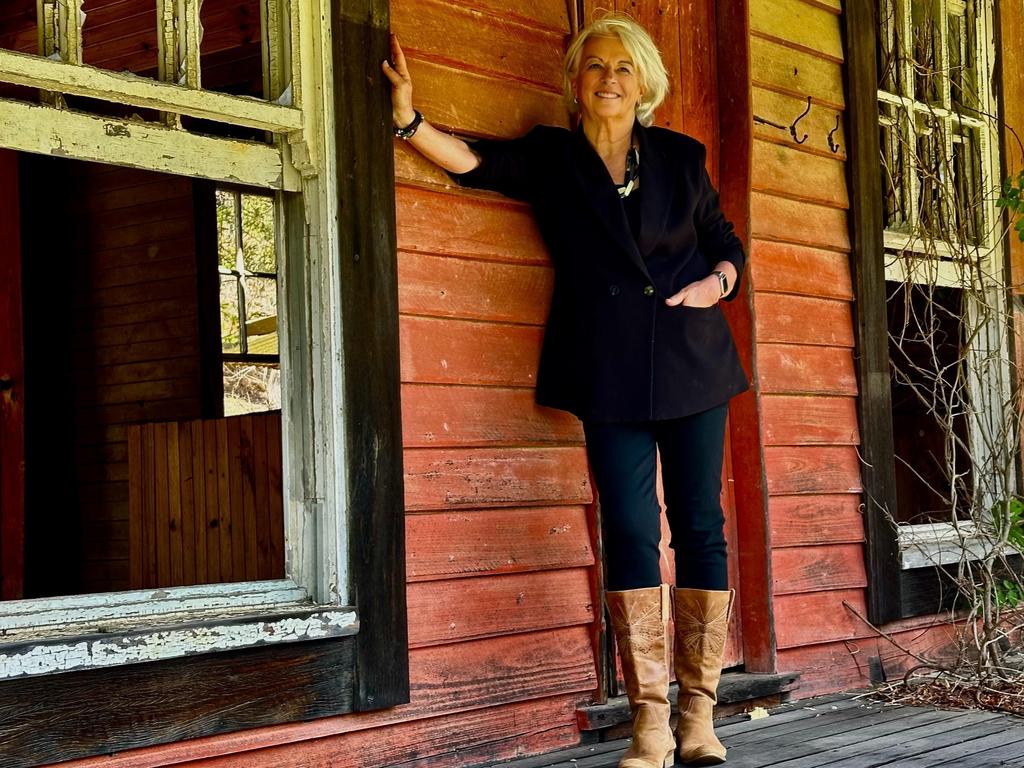A bloodstained dress, an old building and dash of imagination: is this the story behind an Aussie history mystery?
The discovery of a bloodstained silk dress in Australia’s oldest surviving public building was the start of an historical mystery in need of an origin story – now it has one.

I love a good mystery – and the discovery of a bloodstained yellow silk damask dress in Australia’s oldest surviving public building gave me just the inspiration I needed for my latest book.
The bizarre find, in the 1970s, was in the attic of convict-era Old Government House in Parramatta, NSW: a collection of rumpled silk pieces stuffed into a bag.
Donated to the National Trust, those bits languished in storage until they were pieced together fifty years later in 2022 through a collaboration between the National Trust and the National Institute of Dramatic Art (NIDA).
Their work revealed a beautiful eighteenth-century dress – check it out in the video above. But how did it get there? Who owned it? And what about the spots of blood? These are the questions that led me to write The Golden Thread.

I find our history fascinating. The colonial era, in particular, is full of colourful characters. I like to imagine what was happening in their everyday lives, beyond the political actions that shaped the country’s broader story. For example, my last novel, The Talented Mrs Greenway, looked at the life of Mary Greenway, wife of architect Francis Greenway, who was transported as a convicted forger then went on to build some of the most significant buildings across Sydney. Weaving these real historical figures into fictionalised stories is my favourite way to bring history to life.
But, back to that golden dress.
Why did a garment made from silk designed and woven in London, almost fifty years before Arthur Phillip and the First Fleet arrived in Australia, end up in pieces in some cobwebbed attic on the other side of the world? And why did it remain hidden for over a hundred years?


NIDA’s research during the reconstruction yielded fascinating snippets. It is believed that the silk may have been designed and handwoven in the mid-18th century by English textile designer Anna Maria Garthwaite.
As I researched the period, many names from Australian colonial history turned up, among them the unfortunate William Bligh – the NSW Governor deposed in the 1808 Rum Rebellion, nine years after being kicked off his own ship in the infamous mutiny on the Bounty.
When Bligh was appointed governor in 1806, he brought his eldest daughter Mary to act as first lady. His wife Betsey was a dreadful sailor and felt she could not leave her other children – but she sent Mary clothes and fashion papers which she felt would assist in her official role. Betsey’s family were well off and owned a town house not far from Spitalfields, where fabric like the dress was sold. Could our dress have been sent by Betsey to Mary?

After Bligh returned to England Mary remained in Australia and married Maurice O’Connell, a career diplomat and soldier who spent some time as acting governor. When he died unexpectedly in 1848, she returned to England, apparently intending to return to Australia – but she never did.
Is that why the precious yellow dress was left here?
So, with a misplaced garment and a raft of historical names already in the mix, I added some lost gold and a cast of fictional characters, led by Constance Montague and her grandmother Nell. These two strong and independent women take up residence at Old Government House, which at this point is a boarding house. Nell’s connections to the building and the dress are more complicated than they first appear. As the mystery unravels we meet others including a travelling salesman, a bewhiskered Lothario, a lively seamstress, a journalist and an enigmatic housekeeper.

Historical facts influence my stories, while storytelling that brings those historical facts to life. The moment I saw the dress, and learned of the blood spots on the sleeve, I knew there was a tale begging to be told. The fictionalised account of how it came to be in the attic at Old Government House and why it stayed hidden away for so long burst to life in my mind.
A lot of our colonial history is lost to time but with some research and the spark of an idea, we can imagine what was happening in the personal lives of those who shaped Australia – and so The Golden Thread came to be.
The Golden Thread by Tea Cooper is out now, published by HQ Fiction.
Do you love historical fiction? Tell us at The Sunday Book Club group on Facebook.



